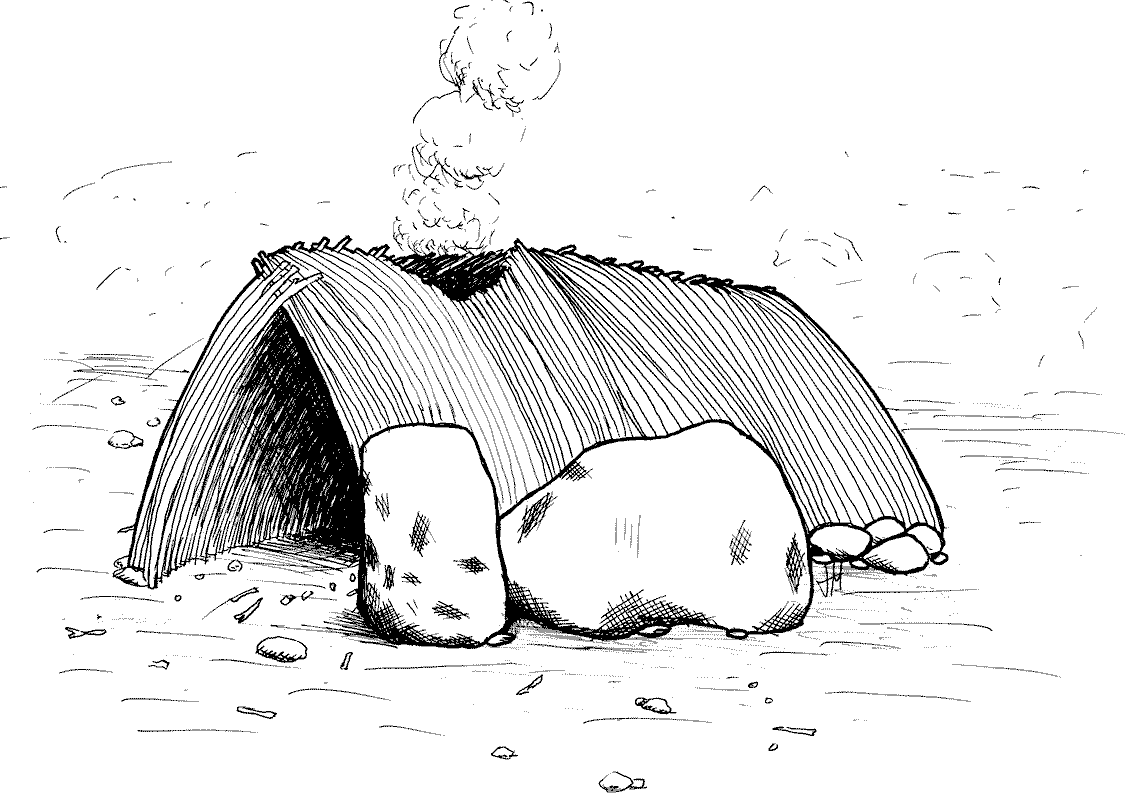
Terra Amata
Encyclopedia

Nice
Nice is the fifth most populous city in France, after Paris, Marseille, Lyon and Toulouse, with a population of 348,721 within its administrative limits on a land area of . The urban area of Nice extends beyond the administrative city limits with a population of more than 955,000 on an area of...
, at a level 26 meters above the current sea level of the Mediterranean. It was discovered and excavated in 1966 by Henry de Lumley
Henry de Lumley
Henry de Lumley is a French archeologist, geologist and prehistorian. He is director of the Institute of Human Paleontology in Paris, and Professor Emeritus at the Museum of Natural History in Paris. He is also a corresponding member of the Academy of Humanities of the Institute of France and...
. The site, originally on a prehistoric beach, contained tools of the lower Paleolithic
Paleolithic
The Paleolithic Age, Era or Period, is a prehistoric period of human history distinguished by the development of the most primitive stone tools discovered , and covers roughly 99% of human technological prehistory...
period, dated to about 400,000 BC, as well as traces of some of the earliest domestication of fire in Europe. The site now contains a museum of prehistoric Nice, where some of the objects discovered are on display.
Principal Discoveries
The site was discovered during the construction of a terrace near the port of Nice in 1966. After negotiating with the owner of the site, DeLumley was given permission to work on the site from January 28 until July 5, 1966. He and his team worked seven days a week, and, at the end, twenty-four hours a day, to complete their work.According to de Lumley, the site contained a settlement with several layers of habitation located on a fossil beach. The habitations dated to 380,000 BC, and included vestiges which suggested that the inhabitants lived in huts on the beach. In the center of each hut was a fireplace, with ashes showing that the inhabitants had domesticated fire. These signs of fire, along with those at Menez Dregan in the Finistere
Finistère
Finistère is a département of France, in the extreme west of Brittany.-History:The name Finistère derives from the Latin Finis Terræ, meaning end of the earth, and may be compared with Land's End on the opposite side of the English Channel...
in France, at Beeches Pit in Suffolk
Suffolk
Suffolk is a non-metropolitan county of historic origin in East Anglia, England. It has borders with Norfolk to the north, Cambridgeshire to the west and Essex to the south. The North Sea lies to the east...
, England, and at Vertesszollos in Hungary
Hungary
Hungary , officially the Republic of Hungary , is a landlocked country in Central Europe. It is situated in the Carpathian Basin and is bordered by Slovakia to the north, Ukraine and Romania to the east, Serbia and Croatia to the south, Slovenia to the southwest and Austria to the west. The...
, are the earliest evidence of the domestication of fire known in Europe. These vestiges included low walls of stones and beach pebbles, placed to the northwest of the fireplaces, which would have sheltered the fire from the strong Mistral
Mistral
Mistral commonly refers to the Mistral in southern France and SardiniaMistral may also refer to:* Mistral, various ships of the French Navy, including:** Mistral class amphibious assault ship of the French Navy...
wind. De Lumley believed the inhabitants built the huts of animal skins supported by poles, with a hole in the center for the smoke to escape. Twenty to forty people could gather in such a shelter. If his theory is correct, Terra Amata is one of the first discoveries of man-made human habitations in Europe.
The site also included evidence that the inhabitants had manufactured tools out of the beach stones, including tools with two cutting faces and a particular kind of stone pick which was given the name '"PIcs de Terra Amata." They also discovered a large number of stone tools and scrapers in the dunes above the beach.
Controversy over Terra Amata
A very different interpretation of the site was given later by another archeologist, Paola Villa, who dedicated part of her doctoral thesis to the same site. She argued that the conclusions reached by De Lumley were more conjectural than compelling. She said it was equally likely that the stones were naturally deposited through stream flow, soil creep or some other natural process.Villa also argued that stone artifacts from the different proposed living floors can be fitted together, showing that artifacts have moved up and down through the sediment column. Thus, the supposed living floor assemblages are most likely mixtures of artifacts from different time periods that have come to rest at particular levels. There was, she said, therefore compelling evidence that the site was subjected to relatively invasive post-depositional processes, which may also be responsible for the stone 'arrangements'.
Villa argued that de Lumley had greatly overestimated the state of preservation of the original site, and that it was impossible to accurately date the objects because the layers could not be considered independent of each other. She also said that the site should be dated later than 380,000 BC to approximately 230,000 BC.

